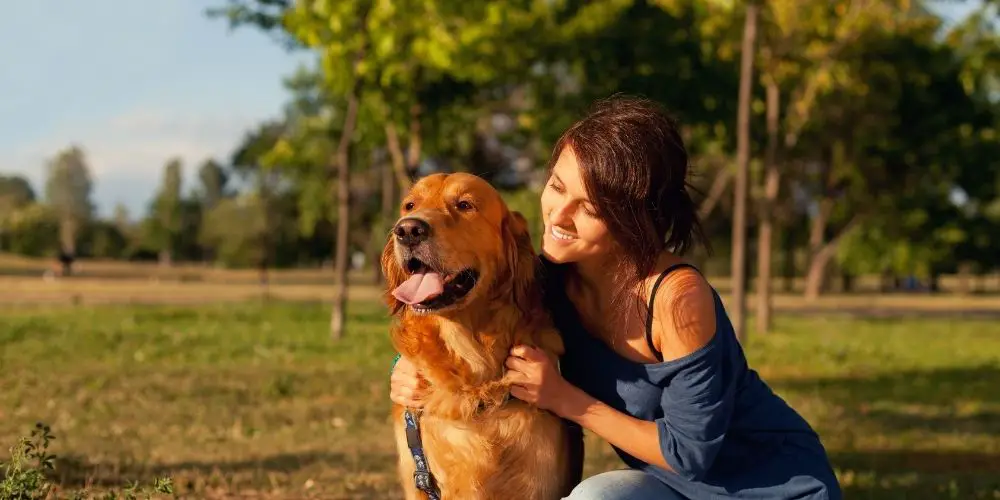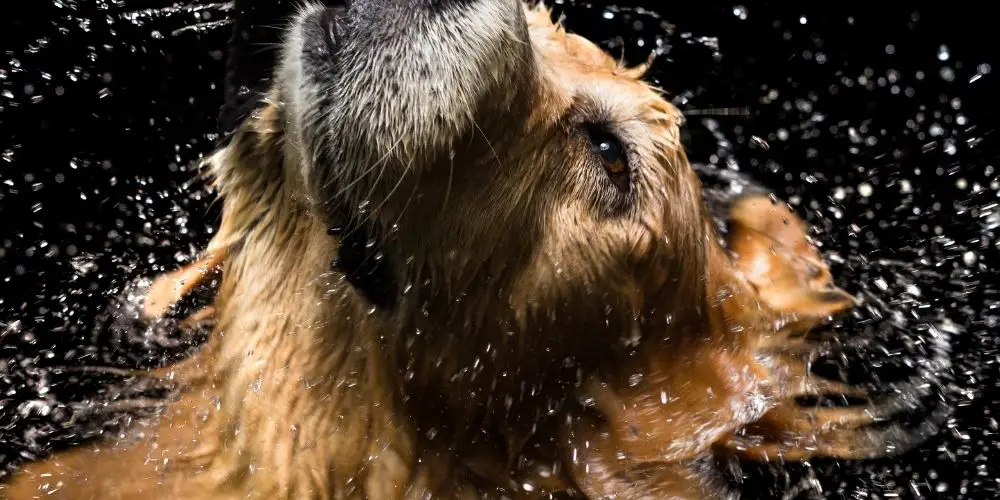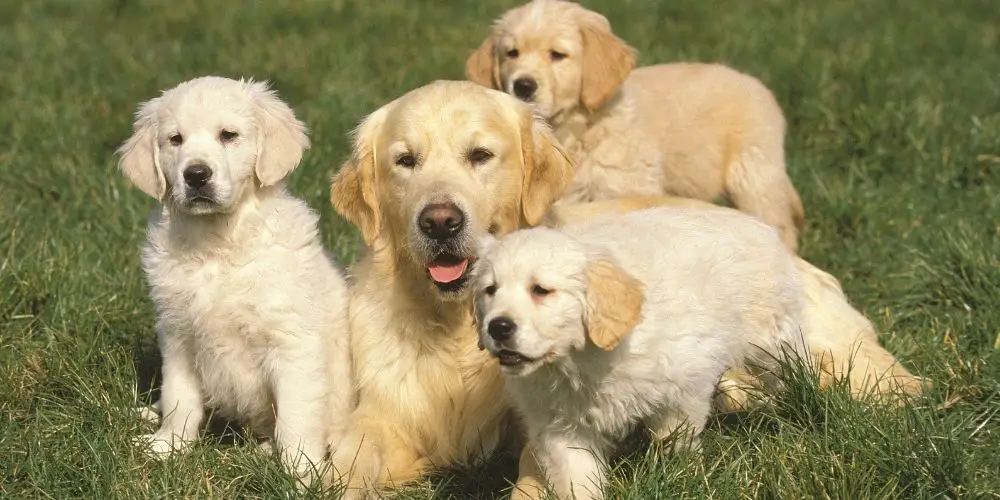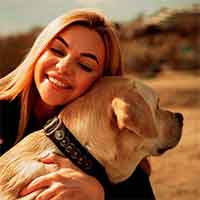Last Updated on July 12, 2023 by Linda Richard
When do Golden Retrievers get their full coat? Golden Retrievers are a popular breed recognized for their pleasant demeanor, intelligence, and long, lustrous fluffy coats. It’s natural for a pet owner to worry about when their Golden Retriever will get their full coat.
The response varies depending on several factors, including heredity, age, and overall health. Understanding when the golden types of Retrievers typically develop their full coat will assist owners in providing the right care and upkeep to ensure their dog’s coat develops normally.

The hair coat is the organism’s initial and most important insulating layer, protecting it from unfavorable thermal conditions in the environment. The coat type is genetically determined and is mostly dictated by the breed of the dog.
In this topic, we will look at when golden types of Retrievers obtain their full hair growth coat and what factors can influence the hair growth and development of the Golden Retriever coat.
Table of Contents
Golden Retriever coat stages
The silky downy feel of your Retriever puppy’s coat is just temporary, and before you know it, long hair is all over your house. As it approaches its first birthday, your dog will begin to shed its puppy coat to make way for the coarser, double-layered adult coat it will have for the rest of its life.

Several factors, including genetics and season, influence when your puppy begins this change, but most Retriever puppies lose their newborn coat between the ages of 7 and 9 months.
Most Golden Retrievers have a lovely, long, and flowing double coat that has to be groomed regularly to keep their health and attractiveness. The coat of a Golden Retriever can be separated into various stages of a golden coat, each with its set of traits and maintenance requirements.
First stage
The puppy fluff coat or puppy fur, which is the soft and fluffy puppy coat that Golden Retriever puppies are born with, is the first stage. The puppy fluff coat is not entirely grown at this point, and it will shed as the puppy grows.
Second stage
Golden Retriever puppies begin to develop their adult fur coat at the age of six to eight months. This is the transitional adult coat, which is the second stage in the stages of golden coat development. The puppy’s coat grows longer, thicker, and slightly wavy throughout this time and becomes adult fur.

The transitional flowing outer coat might be awkward and uneven, but it is an important stage in the growth of a purebred Golden Retriever feathered fur.
Third stage
The third stage is the adult coat hair growth of the adult Golden Retriever, which is distinguished by its long, flowing, and wavy appearance. This coat is fully grown by the time the dog is 18-24 months old, although it can continue to fill up and mature until the dog is 2-3 years old.
Finally, because of age-related health difficulties, a Golden Retriever’s hair may begin to thin or lose its sheen throughout the senior stage. Senior dogs may require additional brushing and care to maintain their coats healthy and to avoid matting or hair loss.
Understanding the many stages of a Golden Retriever’s coat growth can assist owners in providing the appropriate care and maintenance at each step, ensuring that their dog’s coat is healthy, beautiful, and well-maintained throughout their life.
How to take care of your Golden Retriever’s fur
Once your Golden Retriever has grown a full coat, you must take care of it to keep it healthy. Here are some helpful hints on how to go about it:

Maintain your dog’s cleanliness
Long hair coats can collect twigs and leaves, causing the hair to tangle and mat. Remove such materials before washing your dog – every 6-8 weeks for adults, but more frequently for pups as they get dirtier.
Brush the coat frequently
Maintain a consistent brushing schedule. Brushing your pet’s hair promotes new hair development and removes dead skin cells, allowing skin oils to flow evenly throughout the hair. Brush your Golden Retriever daily throughout the shedding season.

Supply high-quality nutrients
Healthy dog food is critical for your dog’s skin and coat. This should have a good nutritional balance of minerals, vitamins, fiber, proteins, carbohydrates, and fats.
How to stop hair from shedding
Although there is no way to prevent shedding, you can get ahead of it by brushing your dog regularly. The sooner you begin this habit, the better because your dog will simply expect it and accept it as a normal part of life.

Brush your dog daily with a slicker brush, or shedding rake to remove as much dead hair as possible before it coats your couch. Brush its hair with the grain and empty the brush regularly. You may need to brush it twice a day during its excessive shedding periods to keep up with the hair loss.
FAQ
Why doesn’t my Golden Retriever have long hair?

There could be various reasons why your Golden Retriever’s hair isn’t long.
To begin with, the genetics play of the puppy’s parents have an important influence in defining a dog’s coat or puppy coat type, color, and length.
While the Golden Retriever breed is noted for its long, flowing coat, individual dogs’ coat length may vary due to genetic causes. Your dog may have received genes that cause the dog’s coat to become shorter.
Another possibility is that it is related to grooming. Brushing adult coats and grooming golden types of Retrievers regularly is necessary to maintain their longer outer coat and fluffy coat and avoid matting.
If your Golden Retriever coat isn’t groomed frequently or adequately, it can become tangled and matted, so the dog begins to lose fur, resulting in a need for a shorter haircut.
Finally, medical issues such as allergies or hormone imbalances can have an impact on the length and quality of a dog’s outer coat. If you have any concerns about your dog’s outer coat, you should always contact a veterinarian to rule out any underlying health issues.
What age is most difficult for Golden Retrievers?

As they grow and mature, golden types of Retrievers, like all dogs, go through various stages of growth. While each dog is unique and may face obstacles at various phases, there are a few developmental stages that can be more difficult for them.
Adolescence, which normally occurs between the ages of 6 months and 2 years, is one of the most stressful times for Golden Retrievers. During this period, Golden Retrievers may exhibit increased energy, impulsivity, and a proclivity to test their owners.
They may also grow less sensitive to instruction and more independent, which can be frustrating for owners. In addition, they start to lose hair when brushed with a soft brush or pin brush.
Another difficult time for Golden Retrievers is their senior years, which normally begin around the age of 7-8 years. As dogs get older, they may have health issues like arthritis, visual or hearing loss, or cognitive decline.
This might result in behavioral changes, such as increased anxiety or hostility, and may necessitate changes to their daily routine or medical care.
Overall, while these stages can be difficult, they can successfully navigate them with patience, continuous training, and good care, and continue to be wonderful companions for their owners.
Can you accelerate the coat transition?
There are methods for hastening your puppy’s transition from puppy coat to full-grown coat. If you want to get the process started, grooming is the way to go.
But first, you’ll want to get your puppy used to sitting through a nice brushing. Starting your dog with a grooming brush may scare them away from brushing in the future.
So, if you’re starting them early, you should first train them with a soft-bristled brush. In terms of grooming, this isn’t going to help much. However, it will help them become accustomed to the sensation of brushing, allowing them to begin being properly groomed sooner.
Does grooming aid in cost control in Golden Retrievers?
Grooming your dog’s fur coat does assist control shedding since it keeps up with the loose hair and removes it before it falls out around your house or gets rubbed off on your couch.
A long rake comb may get into the deep undercoat and remove any loose, annoying hair, while a pin brush maintains the top hairs clean and tangle-free.
With constant grooming and bathing practice for your dog, you have to remove the loose hair and dispose of it. When your dog is molting (losing their hair), you can gently tug on handfuls of their hair. You’ll be surprised at how much comes out, especially in the spring, when your dog’s fur sheds preparing for warmer weather.
Brushing them every day is ideal if feasible; otherwise, attempt to groom them at least three times per week. Bathing, which is essential for coat care, should be done once a week or twice a month with a gentle dog shampoo.
What months do Golden Retrievers grow the most?
The first year of life is when a Golden Retriever puppy, like other dogs, grows the most. Growth rates might differ depending on factors such as genetics, nutrition, and overall health. Golden Retriever puppies often have their most notable development spurts during the first six months of life.
They can acquire up to 10 pounds per month and increase many inches in height throughout this time.
Golden Retriever puppies continue to grow beyond the first six months, albeit at a slower rate. They attain an adult coat or mature coat, which is a thicker coat than puppy fur and a longer outer coat, weight, and height between the ages of 12 and 18 months, though some may continue to fill out and mature until they are 2-3 years old with an adult coat.
While growth spurts can be rapid during particular months, your Golden Retriever puppy must get balanced and healthy food throughout their growth and development phases. Overfeeding or underfeeding might be harmful to their health and growth. Regular veterinary examinations can help ensure that your Golden Retriever is growing and maturing normally.
Golden Retrievers have what kind of coat?
They are classified as retrieving dogs, skidders, and water dogs. These creatures were created to accompany hunting birds. As a result, their lovely long coat is lined with a thick and waterproof undercoat. If left untreated, the outer fur, which is longer on the belly, chest, thighs, hind legs, and tail, can tangle and knot.
Furthermore, hair that falls out profusely, particularly during molting, and remains on the animal, might obstruct skin respiration. This, in turn, frequently results in numerous skin infections and discomfort.

Conclusion
When Golden Retrievers obtain their full coat depending on several factors, including genetics, age, and overall health. While most of them will have their complete coat by 18-24 months of age, others may take a little longer.
When it comes to growing long hair, each Golden Retriever has a different timeframe. Even their hair looks to be various colors of gold. The dog’s genes, though, are the primary motivator. Don’t give up if your Golden puppy appears to be taking too long and you have no knowledge about its parents.
Keep an eye out for the first feathery patches, and once they appear, you’ll know that long hair is on its way. Your reward will be a coat full of lustrous, bright golden hair over time.
To guarantee that your Golden Retriever’s coat grows and develops properly, provide balanced food, regular grooming, and adequate care. If you have any worries about your Golden Retriever’s coat, you should always seek advice from a veterinarian or a professional dog groomer.
Your Golden Retriever can have a beautiful and healthy coat with proper care, making them an even more treasured member of your family.


1 thought on “When do Golden Retrievers get their full coat: A complete guide”
Comments are closed.